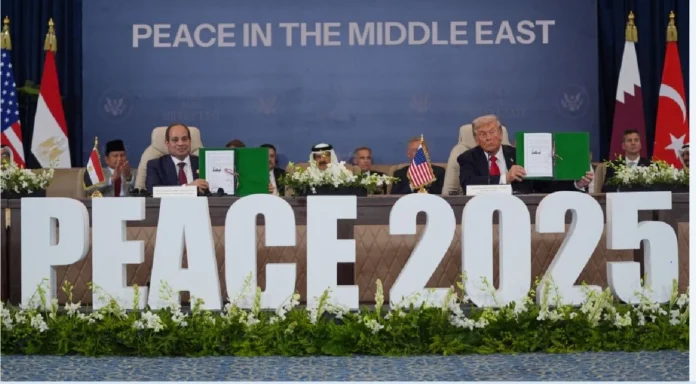By Kenneth Tiven
US President Donald Trump’s self-styled “tough guy” diplomacy has produced what he touts as a breakthrough in the Middle East—a ceasefire between Israel and Hamas involving an exchange of Israeli hostages for Palestinian prisoners. But while the guns have paused, the deeper war for Gaza’s survival has just begun.
The real question is not whether the truce will last, but whether Gaza can be made livable again. Entire neighbourhoods lie in rubble; housing, food, clean water, sanitation, functioning hospitals and schools are scarce. Palestinians lack even the basic resources to rebuild their shattered lives.
Trump claims full credit for what he calls a “peace deal,” though it is more accurately a brokered ceasefire—vague on enforcement and riddled with political self-interest. A weakened Hamas faces internal splits as rival factions jostle for control of Gaza’s reconstruction. Within minutes of the deal, Hamas deployed armed police in Gaza City and executed five alleged collaborators in a grim show of force, even clashing with a powerful local family to reassert dominance.
Veteran diplomats recall a timeless truth: “People who don’t want peace will never get peace.” The two-state solution remains a mirage, obstructed by leaders and populations unwilling to compromise on core issues of sovereignty, territory, and justice.
For both Benjamin Netanyahu and Trump—men addicted to the image of strength—this ceasefire offers political dividends. Netanyahu can celebrate the return of 20 hostages; Trump imagines a Nobel Peace Prize as validation of his global deal-making prowess. “Bibi, you’ll be remembered for this far more than for continuing to kill, kill, kill,” Trump boasted, casting himself as the saviour who halted endless bloodshed.
Behind the bravado lies the work of unseen diplomats whose tireless negotiations became Trump’s self-branded “20-point plan”. Analysts note that Netanyahu’s cooperation may have been forced by a diplomatic blunder—Israel’s bombing of a Hamas leadership meeting in Qatar, where the US maintains a key military base. Trump needed to show independence from his Israeli ally to defuse tensions threatening American interests in the Gulf.
Critical details remain unresolved. Hamas has not signed any binding document on disarmament. Trump insists they promised to lay down arms—or face American intervention. “They will disarm or we will disarm them. Got it?” he declared at the White House. Yet few believe such bravado translates into policy.
Early cracks appeared immediately. Israel halved the flow of humanitarian aid and delayed reopening the Rafah crossing, blaming Hamas for not returning hostages’ remains. Hamas eventually turned over eight bodies to the Red Cross, but 20 remain unaccounted for. Even the dead have become bargaining chips.
While the ceasefire has stopped the killing, Gaza remains a graveyard. Returning residents are discovering decomposed bodies beneath the rubble of their former homes. Any joy is fleeting; history shows that without addressing root causes, peace will again collapse into violence.
Ironically, Trump deserves a measure of credit for pressuring Netanyahu into accepting a pause neither truly wanted. Yet, had Joe Biden pushed the same plan, Republicans would have excoriated him for betraying Israel. Trump’s grip on his party shields him from that hypocrisy.
A deeper shift underlies Trump’s calculation. Young evangelical Christians—once Israel’s most ardent US supporters—are increasingly alienated by scenes of displacement and destruction. Trump, ever attuned to his political base, distanced himself from Netanyahu’s dream of a “Palestinian-free” Gaza. His plan tacitly reinstates UNRWA aid and allows Gazans limited rights of movement, however fragile.
Still, Netanyahu has not pledged to avoid renewed war if Hamas fails to “adequately disarm”, and Hamas’s own conditions remain opaque. Both leaders are manoeuvring to retain power, not peace.
For Gaza’s civilians, trapped between self-interested politicians and militant factions, this ceasefire is little more than a mirage shimmering over ruins. Trump may declare “the war is over”, but the people of Gaza know that peace, once again, is not yet born.
—The writer has worked in senior positions at The Washington Post, NBC, ABC and CNN and also consults for several Indian channels


